
Journal of Cosmology and Astroparticle Physics
Scope & Guideline
Illuminating the Mysteries of the Cosmos
Introduction
Aims and Scopes
- Cosmological Models and Theories:
The journal focuses on the development and analysis of various cosmological models, including inflationary models, dark energy dynamics, and modifications to general relativity, often exploring their implications for the structure and evolution of the universe. - Dark Matter and Dark Energy:
A significant portion of the research published addresses the nature of dark matter and dark energy, investigating their properties, interactions, and roles in cosmic evolution, utilizing both theoretical frameworks and observational data. - Gravitational Waves and Astrophysical Observations:
The journal includes studies on gravitational waves, including their sources, propagation, and implications for astrophysics and cosmology, highlighting the integration of multi-messenger astronomy. - Quantum Gravity and High-Energy Physics:
Research often delves into the implications of quantum gravity theories, string theory, and high-energy particle physics on cosmological phenomena, aiming to bridge the gap between cosmology and fundamental physics. - Numerical Simulations and Computational Methods:
The journal emphasizes the use of numerical simulations and advanced computational techniques to model complex astrophysical systems, analyze cosmological data, and test theoretical predictions.
Trending and Emerging
- Multi-Messenger Astronomy:
There is a growing trend towards studies that combine observations from gravitational waves, electromagnetic signals, and neutrinos, highlighting the importance of a holistic approach to understanding cosmic events. - Machine Learning and Big Data Analysis:
The integration of machine learning techniques for data analysis and simulation in cosmology is rapidly increasing, as researchers seek to harness computational power to extract meaningful insights from large datasets. - Primordial Black Holes and Dark Matter:
Research focusing on primordial black holes as candidates for dark matter has gained traction, especially in light of new observational data that suggest a connection between these phenomena. - Cosmological Implications of Modified Gravity:
An increasing number of papers are exploring modified gravity theories and their implications for cosmological observations, reflecting a trend towards re-evaluating general relativity in light of new data. - Quantum Effects in Cosmology:
There is a burgeoning interest in understanding how quantum effects influence cosmological models and phenomena, particularly in the context of inflation and early universe dynamics.
Declining or Waning
- Classical Cosmology without Modifications:
Papers focusing on traditional models of cosmology, such as the standard ΛCDM model without modifications, have seen a decrease as researchers increasingly explore more complex models that incorporate new physics. - Non-Standard Neutrino Physics:
Research on non-standard neutrino interactions has become less frequent, possibly due to a convergence of experimental results towards standard neutrino models, diminishing the urgency for alternative frameworks. - Basic Dark Matter Candidate Studies:
Initial explorations of simple dark matter candidates (such as WIMPs) have declined in favor of more nuanced models, such as those involving interactions with new physics or complex dynamics. - Strictly Particle Physics-Focused Studies:
Papers that solely concentrate on particle physics without a cosmological context have waned, indicating a shift towards integrated approaches that relate particle physics to cosmological observations.
Similar Journals
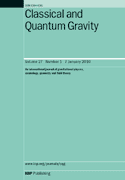
CLASSICAL AND QUANTUM GRAVITY
Bridging Classical and Quantum Perspectives in PhysicsCLASSICAL AND QUANTUM GRAVITY is a prestigious journal published by IOP Publishing Ltd, positioning itself at the forefront of research in the domain of theoretical physics, particularly focusing on gravitational theories in both classical and quantum frameworks. With an impressive Q1 rank in the field of Physics and Astronomy, it has established a significant academic presence since its inception in 1984. This journal offers a platform for disseminating high-quality research findings and critical reviews, playing a pivotal role in advancing our understanding of the foundations of gravitational physics. Researchers and professionals alike will find this scholarly publication an invaluable resource for staying abreast of the latest developments in gravitational theory, quantum gravity, and related interdisciplinary studies. Despite the absence of open access options, its vibrant print and online presence ensures that contributions are accessible to the global scientific community. With a commitment to fostering innovation in an area that remains central to modern physics, CLASSICAL AND QUANTUM GRAVITY continues to attract cutting-edge research that shapes the future of gravitational studies.
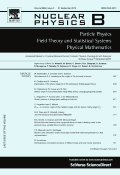
NUCLEAR PHYSICS B
Advancing Knowledge in High Energy PhysicsNUCLEAR PHYSICS B, published by Elsevier, stands at the forefront of research in the dynamic field of Nuclear and High Energy Physics. Established in 1967, this prestigious journal has developed a reputation for excellence, now positioned in the Q1 category according to its 2023 quartile rankings. With an impressive Scopus rank of #21 out of 87 in its category and a commendable 76th percentile, it serves as a vital resource for scholars investigating the underlying principles of nuclear interactions and particle physics. The journal transitioned to an Open Access model in 2014, ensuring that groundbreaking research is accessible to a global audience. Its commitment to quality and innovation makes NUCLEAR PHYSICS B an essential platform for researchers, professionals, and students aiming to stay at the cutting edge of discoveries in this expansive field, contributing to the scientific discourse for nearly six decades.

INTERNATIONAL JOURNAL OF MODERN PHYSICS A
Unveiling the mysteries of the universe through rigorous research.INTERNATIONAL JOURNAL OF MODERN PHYSICS A, published by WORLD SCIENTIFIC PUBL CO PTE LTD, stands as a pivotal platform in advancing the frontiers of research within the fields of Astronomy and Astrophysics, Atomic and Molecular Physics, and Nuclear and High Energy Physics. Established in 1989, this journal has systematically contributed to the scientific community, with a demonstrated impact as indicated by its Q2 category rankings across these critical disciplines in 2023. Researchers and professionals are encouraged to engage with its rigorous peer-reviewed content, fostering a deeper understanding of modern physics theories and experimental breakthroughs. Although the journal operates under a conventional access model, it remains a vital resource for those seeking to disseminate their findings and stay abreast of cutting-edge developments. With an emphasis on quality and breadth of research, the journal continues to attract submissions from leading physicists and scholars, enhancing its reputation as a key academic resource.
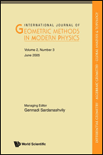
INTERNATIONAL JOURNAL OF GEOMETRIC METHODS IN MODERN PHYSICS
Pioneering Research at the Crossroads of Geometry and PhysicsINTERNATIONAL JOURNAL OF GEOMETRIC METHODS IN MODERN PHYSICS is a leading academic publication dedicated to the interdisciplinary exploration of geometric methods in the realms of modern physics. Published by WORLD SCIENTIFIC PUBL CO PTE LTD, this esteemed journal is based in Singapore and acts as a critical platform for researchers, professionals, and students seeking to delve into the intricacies of modern theoretical physics and its geometric foundations. With an impressive Scopus ranking placing it in the 64th percentile of its category, the journal highlights innovative research and developments from 2005 to 2024 within its scope. While currently not offering Open Access, it remains a vital resource for the dissemination of valuable knowledge in its field, contributing significantly to the advancement of physics and astronomy. We encourage the academic community to explore this exceptional journal for cutting-edge insights and to further enhance their understanding of geometric applications in modern scientific inquiry.

Physics of Particles and Nuclei Letters
Exploring the Depths of Atomic SciencePhysics of Particles and Nuclei Letters, published by PLEIADES PUBLISHING INC, serves as a pivotal platform for the dissemination of cutting-edge research in the domains of particle and nuclear physics. With an ISSN of 1547-4771 and an E-ISSN of 1531-8567, this journal has been actively contributing to the scientific community since its inception in 2006 and continues to be influential, with a convergence period extending to 2024. While its open access options are limited, the journal is recognized for its rigorous peer-review process and commitment to quality, as reflected in its Scopus rankings across multiple categories, including a Q3 in Nuclear and High Energy Physics and Radiation in 2023. The journal is positioned to be a vital resource for researchers aiming to bridge theoretical understanding with practical applications in these highly specialized fields, fostering advances that resonate within atomic and molecular physics, radiology, and beyond. Its relevance continues to grow as the global scientific community seeks innovative solutions to complex problems in modern physics.
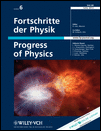
FORTSCHRITTE DER PHYSIK-PROGRESS OF PHYSICS
Illuminating the Path of Scientific Discovery in PhysicsFORTSCHRITTE DER PHYSIK-PROGRESS OF PHYSICS, published by WILEY-V C H VERLAG GMBH, is a prestigious academic journal esteemed within the field of physics. With a history spanning over seven decades since its inception in 1953 and a converged publication up until 2024, this journal has established itself as a leading source for groundbreaking research and developments across diverse domains in physics and astronomy. Holding an influential Q1 ranking in the 2023 category of Physics and Astronomy (miscellaneous), it serves as an essential platform for disseminating high-quality research findings and theoretical advancements. Although not an Open Access publication, FORTSCHRITTE DER PHYSIK provides access to critical insights and scholarly discussions that are pivotal for researchers, professionals, and students alike. The journal is committed to contributing to the evolution of knowledge in physics, supporting the academic community through rigorous peer-reviewed articles, reviews, and innovative studies.
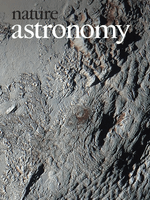
Nature Astronomy
Advancing Astronomy: Your Gateway to Cutting-Edge Research and Discoveries.Nature Astronomy, published by NATURE PORTFOLIO, stands at the forefront of the field of Astronomy and Astrophysics. Since its inception in 2016, this esteemed journal has rapidly ascended to a prestigious position, achieving a Q1 ranking in the Astronomy and Astrophysics category and securing an impressive 6th place out of 90 journals in the Scopus rankings, placing it in the 93rd percentile. With a focus on disseminating pioneering research, Nature Astronomy provides a vital platform for the dissemination of high-quality, impactful findings across various aspects of astronomical science. Researchers, professionals, and students alike will find a wealth of knowledge and innovative perspectives within its pages, enabling them to stay ahead in a rapidly evolving field. Although it does not offer open access, the journal's commitment to excellence and its influence in shaping the future of astronomical research make it an indispensable resource for anyone serious about advancing their understanding of the cosmos.

ASTROPHYSICS
Pioneering Insights: Advancing the Frontiers of AstrophysicsASTROPHYSICS, published by Springer/Plenum Publishers, stands as a crucial platform for the dissemination of groundbreaking research in the field of Astronomy and Astrophysics. Established in 1965 and continuing its legacy until 2024, the journal highlights significant advancements, theoretical frameworks, and observational data that collectively push the boundaries of our understanding of the universe. Although currently categorized in the Q4 quartile for Astronomy and Astrophysics and holding a Scopus rank within the 17th percentile, ASTROPHYSICS remains dedicated to offering rigorous peer-reviewed content that is essential for researchers, professionals, and students alike. While it does not provide open access, the journal's accessibility through institutional subscriptions ensures a wide reach among the academic community, allowing it to address the rising curiosity surrounding cosmic phenomena and contribute meaningfully to ongoing scholarly discourse. For those seeking to engage with the latest findings and methodologies in astrophysics, ASTROPHYSICS continues to serve as an indispensable resource.
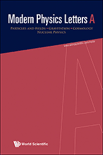
MODERN PHYSICS LETTERS A
Illuminating the Path of Modern Physics ExplorationMODERN PHYSICS LETTERS A, published by World Scientific Publishing Co Pte Ltd, is a distinguished journal in the field of physics that serves as a pivotal platform for researchers, professionals, and students alike. With ISSN 0217-7323 and E-ISSN 1793-6632, the journal has gained international acclaim for its contributions to Astronomy and Astrophysics as well as Nuclear and High Energy Physics. The journal is ranked in Q3 for both Astronomy and Astrophysics and Nuclear and High Energy Physics, showcasing its relevance in these areas, while also achieving a Q2 ranking in the broader category of Physics and Astronomy (miscellaneous). Spanning from 1996 to 2024, MODERN PHYSICS LETTERS A promotes open dialogue and dissemination of pioneering research findings and innovative theories. While the journal operates without an open access option, its rich content is easily accessible through various academic databases, ensuring that vital research is shared widely among the scientific community. Situated in Singapore, this journal plays an essential role in the continuous advancement of the physics discipline, fostering collaboration and knowledge sharing among global researchers.
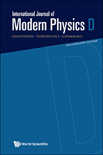
INTERNATIONAL JOURNAL OF MODERN PHYSICS D
Unveiling the Mysteries of the UniverseWelcome to the INTERNATIONAL JOURNAL OF MODERN PHYSICS D, a premier publication dedicated to the advancement of knowledge in the fields of Astronomy and Astrophysics, Mathematical Physics, and Space and Planetary Science. Published by WORLD SCIENTIFIC PUBL CO PTE LTD in Singapore, the journal boasts an impressive impact, being ranked Q2 in Astronomy and Astrophysics and Mathematical Physics, and Q3 in Space and Planetary Science. With a converged publishing timeline from 1996 to 2024, this journal provides a vital platform for researchers and professionals to disseminate their findings, engage with cutting-edge research, and explore emerging ideas in modern physics. Although it operates under a traditional access model, the rigorous peer-reviewed process ensures that only the highest quality research contributes to the collective understanding of our universe. Join us in advancing the frontiers of physics and astronomy!